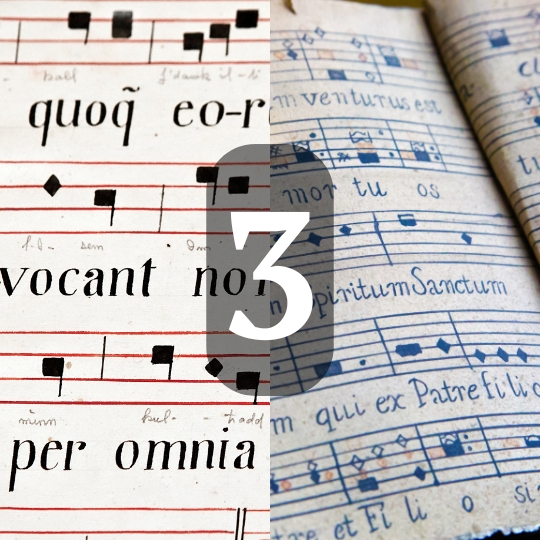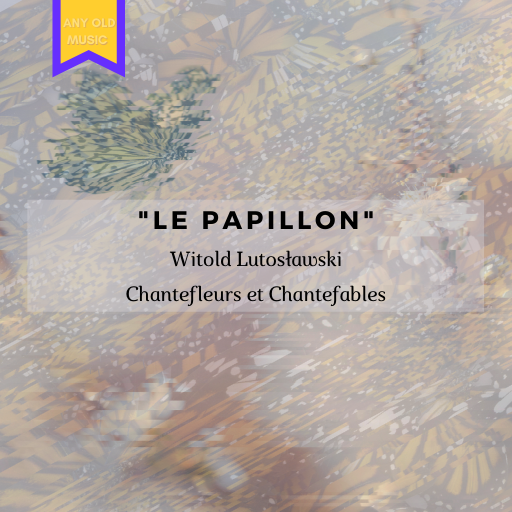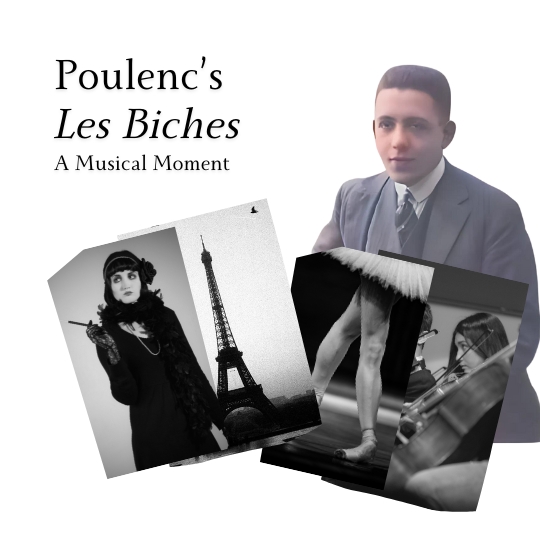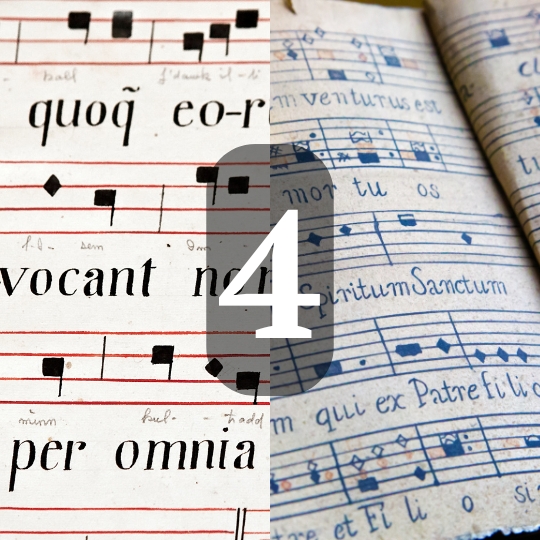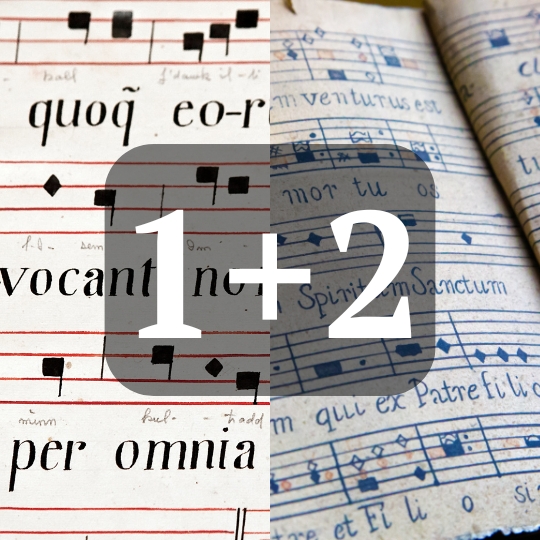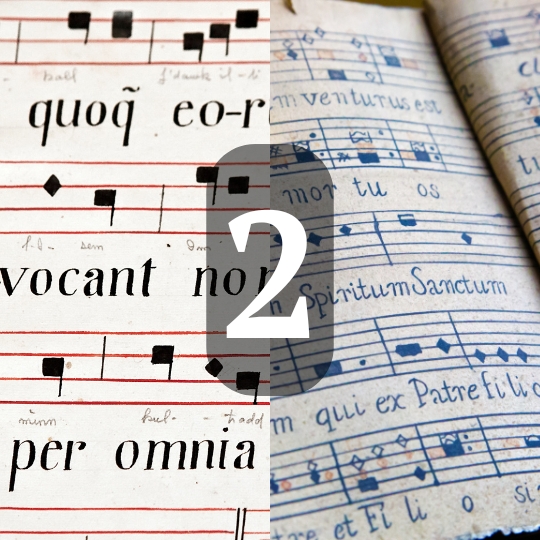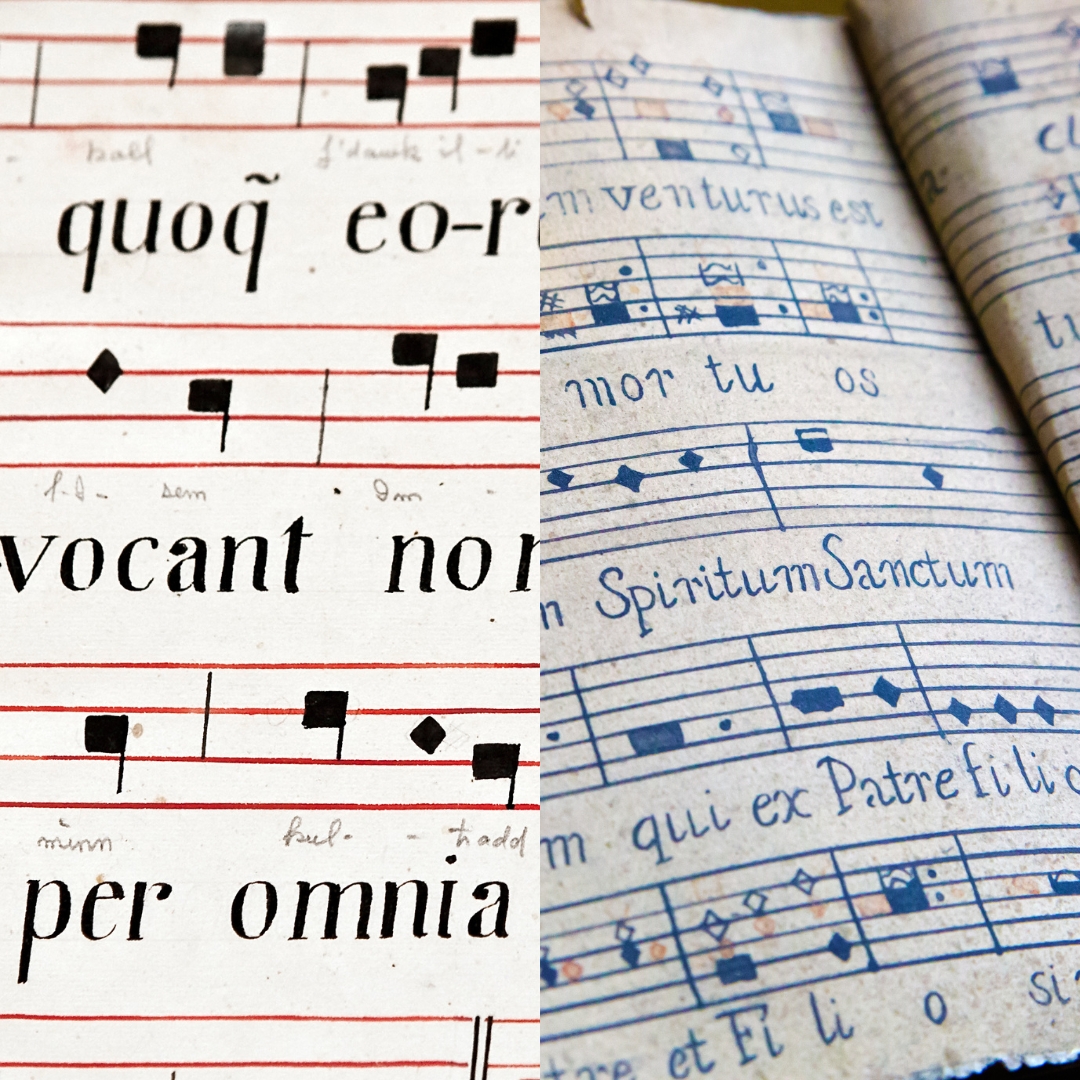Readers keep scrolling, video content lovers click above!
To understand the composition technique used by Arvo Pärt in Für Alina more deeply, I thought I would take the “rules” of tintinnabuli that we established a few weeks ago in our Für Alina composition techniques article and video and apply them in a series of exercises. The first of these will be a contrapuntal exercise that sets Twinkle Twinkle in counterpoint with different forms of t-voice, in A-aeolian/natural-minor. In advancing the principles of the first exercise, the second exercise will experiment with harmony and tonality, discussing the effects of each. Similarly to the second exercise, the third will experiment with harmony and tonality of the t-voice, but modality between the two voices as well. The last exercise will be to create an arrangement of Twinkle Twinkle Little Star, using the principles of tintinnabuli.
Revising The Tintinnabuli Voices
Types
To start, we want to revise our understanding of the two types of voice in tintinnabuli. The first of these is the m-voice or melody voice. The m-voice is the one that can use any tone of the relevant scale. In this video, the m-voice will be the melody of Twinkle Twinkle Little Star. However, as tintinnabuli often uses minor-modes, we will transpose Twinkle Twinkle into a minor mode. Therefore, the m-voice will be Twinkle Twinkle in A-aeolian/natural minor. (Although, we will experiment with the modality of this voice later.)
Sidenote: The prevalence of minor in tintinnabuli comes from its connection with well-tuned bells. Their unique overtone series produces a minor-3rd and perfect-5th as the first two harmonics. Forming a minor triad, this is a possible reason for its use of minor modes and the solemnity evoked by tintinnabuli works.
Similarly, the tintinnabuli-/t-voice is restricted to the notes of the root triad. The t-voice is the voice that we will experiment with the most harmonically and contrapuntally. These experimentations will let us expand the creative options available to us when using the principles of tintinnabuli. They will also show the effects of harmony and the lightness and darkness of tonal and modal relationships.
Harmonising Twinkle Twinkle: Voice Relationships Revised
Now that we know the two types of voice, we can begin to establish ways of defining how they interact and relate to one another. To do this, we’re going to take the relationship and position relationships outlined by musicologist Paul Hillier (1997). These are 1st-inferior, 2nd-inferior, 1st-superior and 2nd-superior. We are going to use them to reharmonise Twinkle, Twinkle using each relationship in isolation. (This will help remind us of what the terms mean too!)
The video above highlights the different relationships between the m- and t-voices. The first repeat section harmonises the melody of Twinkle Twinkle in A-aeolian, using an inferior relationship. Inferior means the t-voice, which is the left hand in this instance, is below the m-voice.
In the first repeat section, for the first playthrough, the voices are in a 1st-inferior relationship. This relationship means the t-voice is as close to the m-voice as it can be (ignoring the 8va, just like in Fur Alina). In other words, the t-voice cannot have a triadic tone any closer to the m-voice without being the same pitch or in a different position.
For the repeat of the first section, using the bottom staff as the t-voice, the voices are in 2nd-inferior. This relationship means the triadic note that the t-voice uses are lower than the m-voice, but another triadic note is available between it and the m-voice.
For the second repeat section, the same is true. However, the position is now superior, meaning the t-voice is above the m-voice. For the first repeat of the second section, therefore, the t-voice is as close to the m-voice as it can be, without being the unison or placed into an inferior position. For the second repeat, there is an available triadic note between the t- and m-voice. I annotate and lightly animate the score in the video below to try and highlight these points.
Want to give tintinnabuli a try for yourself? Well, why not sign up for our musical knowledge bombing list? I’ve created a “recipe card” that outlines a simple methodology for composing your own tintinnabuli composition, the pdf is given in our welcome email. (Click the link to find out more details.)
Continuing from the foundational work in first and second species, third species counterpoint introduces a more intricate rhythmic structure by pairing four
Experimenting With Tonality And Modality
T-Voice Experiments
Our understanding of these voices and their relationships means that we can start to build experiments around how we harmonise our melody. The one that I want to explore here is what happens if we alter the tonic of the t-voice and, in later experiments, the modality of the m-voice. I am curious to see how this alters the feeling and colour of the music, and whether the effect is something we want to exploit in our arrangement/composition of Twinkle Twinkle Little Star.
To keep the experimentations concise and balanced in presentation, I decided to keep the textures similar, using only minims for the t-voice. Furthermore, the t-voice remains below the m-voice in an inferior position. However, I do alter the distance between phrases. For example, the first four bars use 1st-inferior, while the last 4 use 2nd-inferior. Likewise, the inner pair of two-bar phrases are in 1st and then 2nd inferior position.
In reality, the experimentation was much less clinical and much more fluid and expansive. While at the piano, I tested different voice positions and counterpoints. These come through much more in the final arrangement. Here the examples have been engraved to give a flavour of the effects that are possible. I do not use all of these in the final arrangement, and I also do other things in the final arrangement that I do not experiment with here.
At the bottom of this sub-section is a video with the T-voice experiments. Here, I offer some short comments on each one.
A-minor/C-major & A-minor/F-major
I particularly enjoy the two (C & F) major harmonisations. They maintain the simplicity one wants from tintinnabuli while adding a layer and colour that is not present when the harmony and melody are so rooted in A-aeolian.
In C-major, due to me opening the sketch in 1st-inferior, the harmony tones are similar to what one would expect in A-aeolian. Therefore, the use of G-natural, in my opinion, is a surprising but nice contrast. Ironically, the 5th of the triad, the G, becomes the most important tone here. Typically, in harmony, omitting the 5th of the chord is acceptable, as it is not integral in informing us of a chords quality. However, here it is crucial in imposing C-major underneath the clear A-minor melody line. Otherwise, the harmony would be chord tones of A-minor, reinforcing that harmony and tonality.
The use of the G, via the C-major triad, is also significant as the melody and other harmonies do not use this pitch. Therefore, its use, much like how Pärt does not use the G, avoiding the minor-9th, in Für Alina, is refreshing.
In F-major, the harmony is undoubtedly major from the off and only gets lighter in mood. The counterpointing of the F triad against the A-minor melody creates a Lydian effect via the B-natural. The brightest of the modes, the effect is still introspective but tinged with optimism.
A-minor/D-minor
The use of the D-minor triad brings an interesting dichotomy. Reinforcing the solemnity that tintinnabuli can evoke through its use of minor tonalities, the feeling is a shade different to the use of A-minor alone. The natural-B/6 (which would be flat in D-minor) creates a lighter mood. However, the closeness of the keys, both being dominant-related, makes it all feel natural.
Edging into territory I am less familiar with. There is a possible relationship here that is compelling with regards tintinnabuli and its origins in medieval sacred music. This is the hypodorian relationship that the m-voice creates by forming a dorian relationship with the d-minor triad but residing, predominantly, between two A’s (or at least an A and the F a minor-6th above), the 5th of D.
Wikipedia definition
Britannica Definition
A-minor/Ab-major
I thought it would be interesting to test out a harmonisation very close and of a different modality to the A-aeolian melody. As I use Bb-major in the following section, against an adapted A-Phrygian melody, I thought Ab-major would be an interesting one to explore here.
The sharp dissonances, in my opinion, are very nice and I like the effect of having the t-voice occupy a triad so near (yet so far!) from the m-voice. The bitonality is also clearer due to the distance between the keys and their fewer shared tones.
It is not something I use in the final arrangement, choosing to go much more straightforward. However, it was worth the exploration and could be something worth exploring in the future.
(I technically make a mistake on this one, dropping the C down to Ab, which creates what can only be a 1st-superior relationship that is lower than the m-voice. However, this use of the t-voice, using superior relationships while remaining below the m-voice is something I end up using in the final arrangement. I cannot remember, therefore, if this was a mistake or experimentation. I’ll go with the latter!)
M- & T-Voice “Modal” Experiments
Having played around with the t-voice, I thought it would be good to also experiment with modal adaptations and further, different, juxtapositions of harmony. Maintaining the minor modal quality I limit myself to three experimentations that juxtapose A-Dorian against D-major (D-mixolydian), A-Phrygian against D-minor (D-aeolian) and A-Phrygian against Bb-major (Bb-Lydian?). These explorations served, unexpectedly, as nice studies in modality and the concept of poly-modality. Something I had not anticipated and only came to my attention through analysing them.
A-Dorian/D-major (D-Mixolydian)
Technically, the effect here could be D-Mixolydian. However, I list them here as A-Dorian and D-major as this is how I thought about the two voices. From a listener’s perspective, it depends, really, on how distinctly you hear the two voices. The C-natural feels a significant and colourful note. Heard in bar-3, it recontextualises the two modes as one rather than distinguishing them.
To have the modes be distinct and the effect more poly-modal, the voices would need more different colour tones between them. Similar to the A-minor/Ab-major juxtaposition in the previous section, which gave a bitonal effect. Furthermore, the resting (tonic) of the m-voice could do with being a less comfortable tone than the dominant.
In a tonal context, where there is functional harmonic movement, the dominant could have been a substantial harmonic stress. However, in the context of a static, underlying harmony: the D-major triad, the feeling is much more restful.
A-Phrygian/D-minor (D-aeolian?)
Similar to the previous example, I list these modes as A-Phrygian and D-minor. However, the closeness of these two modes means that one could hear this as D-Aeolian. That said, I think the separation is greater between these two voices, the modes used here and their distance from the original major tonality setting of Twinkle Twinkle Little Star.
The best way of explaining what I mean here is by drawing on the previous example and the figure below the video. If we look first at the figure below the video, we can see the modes as they appear on the circle of 5ths. Moving anti-clockwise from a 12-6 o’clock position, the modes go from Lydian to Locrian. Or from bright, resolved and major to dark, unresolved and minor. I think the separation and, thus, the bi-modal effect comes from two fundamental modal characteristics. First, the distance between the Phrygian Twinkle Twinkle, in this instance, and its original major/Ionian setting. Second, the two modes are unquestionably minor. The confluence of the Dorian m-voice and major triad t-voice created a major mode in the form of the Mixolydian. Here, both are minor.
It is because of these contextually more notable qualities that I feel the two voices sound more distinct. Phrygian is a more restless and darker mode. The flat-2nd (Bb), which would be a diatonic-6 in the context of D-aeolian, is further from the original Twinkle Twinkle little star, making it stand out and, thus, alters the entire character of the melody.
A-Phrygian/Bb-major (Bb-Lydian?!?)
In the case of this piece, I think the melody is distinctly Phrygian, and the harmony does little to alter this. Bb-Lydian is not the feeling I get from this piece. However, I think the reasoning is slightly different and possibly easier to explain than the previous example.
Simply put, the resting point of A, for the m-voice, is at odds with Bb-Lydian. It is a natural point of rest, as the tonic (A in A-Phrygian). However, it is the tension-filled leading tone of Bb.
Through the middle phrases of the piece, where the melody rests on Bb, the feeling is Bb-Lydian. However, in the outer phrases, the separation, to me, is clear. In this sense, we get a form of bot “modal modulation” and “modal interchange” (Persichetti, 1961:40) from A-Phrygian/Bb to Bb-Lydian, giving this experiment an interesting shape and colour over its short duration.

https://www.youtube.com/watch?v=QYUPk1vKxQk&ab_channel=AnyOldMusic Witold Lutosławski’s Chantefleurs et Chantefables is a song cycle for soprano voice and chamber orchestra, completed in 1991. Textually, the songs
Using Tintinnabuli to arrange Twinkle Twinkle Little Star
I decided to use the simpler combinations from the previous experimentations for my tintinnabuli arrangement of Twinkle Twinkle Little Star (annotated score video below). The reason being that I wanted to imbue the piece with the essence of the style that I was homaging while also injecting some semblance of original thought(!). I also, bring the hands closer together, out of personal preference.
I, therefore, use only A-aeolian in the m-voice and for the majority of the t-voice. However, I also use C-major and F-major for small portions of the t-voice, close to the end, to create that introspective optimism that I felt they conjured so well in the experimentation. I also liked how using C-major later in the piece held back the use of the pitch G. Doing this added to the simplicity of the preceding sections while also bringing vitality later in the composition.
In arranging the piece, I adhere much more strictly to tintinnabuli in the 1st setting of the melody. In the repeat, I alter the harmonies to provide variation. I do this not only in the form of the triads, as I have discussed, but via the contrapuntal rules and relationships too. For example, at the start of the repeated section, tintinnabuli positions were second to intervallic quality. I decided I wanted all the relationships to be open intervals*.
*Open intervals are vertical relationships between a pair of notes, which provide us with no information about a harmony’s tonal quality (major or minor).
In both sections, the initial statement and repeat, I also play around with the relationships between the voices. For example, at bar 10, I use the technique that so nearly caught me out in my analysis of Für Alina. In diligently using 1st-inferior relationships in the first part of the work, I use the E in the melody to pivot the voice roles. The t-voice becomes part of Twinkle Twinkle Little Star while the m-voice moves to the left hand.
I use this technique again in the repeated section. First at the close of the work but also in bar 7 and 8 of the repeat. In bar 7 and 8, I manipulate the rules. I do this by thinking about the t-voice as being superior to the m-voice. However, I do not alter the register, so the t-voice remains in a lower pitch register to the m-voice.
Summary
The beauty of tintinnabuli is that it is an accessible approach to composition and great for kickstarting creativity! Like most of the simpler things in life, it’s easy to get started (as I do here!) but harder to truly master. There is plenty of room in the rules for exploration and manipulation.
Want to give tintinnabuli a try for yourself? Well, why not sign up for our musical knowledge bombing list? I’ve created a “recipe card” that outlines a simple methodology for composing your own tintinnabuli composition, the pdf is given in our welcome email. (Click the link to find out more details.)
Musical Moments is a new series where I focus on larger works—whether in orchestration, length, or complexity—and zoom in on small sections …
Fourth Species Counterpoint is a type of music composition that focuses on creating counterpoint through suspension and syncopation, which means that notes …
Combining 1st and 2nd species counterpoint is where we truly start to unlock counterpoint’s potential as a tool for enhancing our composition …
Continuing from the foundational work in first and second species, third species counterpoint introduces a more intricate rhythmic structure by pairing four …
Continuing our study of species counterpoint from last week, where we looked at counterpoint in the first order / first species, this …
First species counterpoint, often referred to as “note against note” counterpoint, is the foundation of contrapuntal composition. It (First Species Counterpoint) involves …

